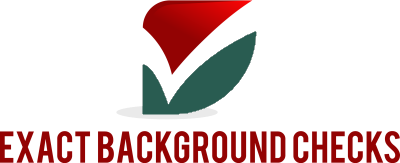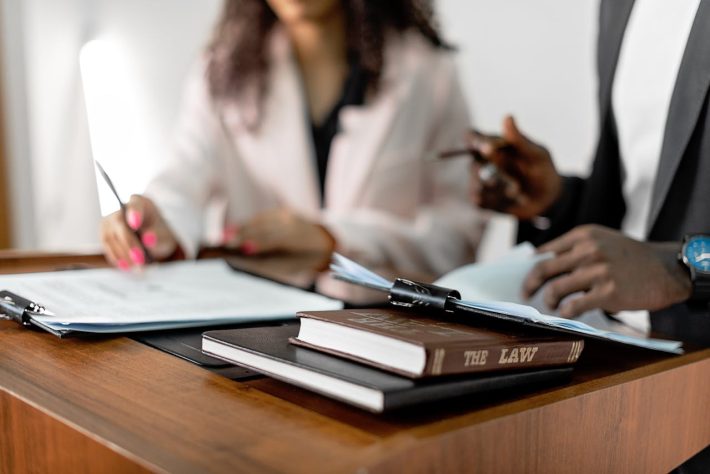Facts About the 5-Panel Drug Test Duration

Introduction and Overview of 5-Panel Drug Tests
What is a 5-Panel Drug Test?
A 5-panel drug test is one of the most commonly used screening methods for detecting the presence of certain substances in an individual’s system. This type of test is often utilized in various settings, including employment screenings, pre-employment tests, and random workplace drug testing. The “5-panel” term refers to the five specific drugs or drug classes that the test is designed to detect. Typically, these include:
- Marijuana (THC)
- Cocaine
- Opiates (Heroin, Morphine, Codeine)
- Amphetamines (including Methamphetamine)
- Phencyclidine (PCP)
These substances were selected based on their widespread abuse and potential impact on safety, productivity, and workplace behavior. In this part of the article, we will explore what a 5-panel drug test entails, why it’s commonly used, and its role in various industries.
Why is the 5-Panel Drug Test Commonly Used?
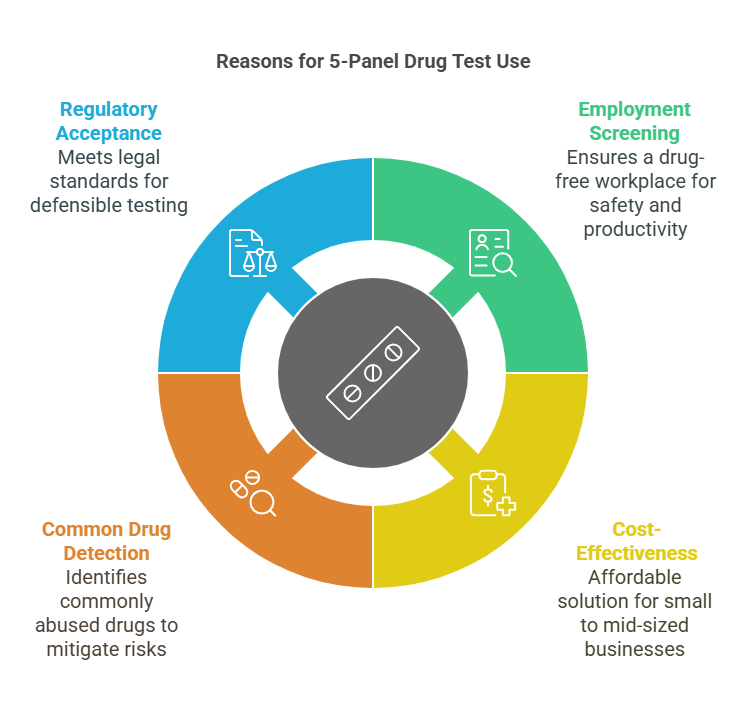
1. Standard for Employment and Pre-Employment Screening
The 5-panel drug test has become a standard tool for employers seeking to ensure a drug-free workplace. Whether the test is part of pre-employment screening or random drug testing for current employees, employers typically use it to detect the presence of illicit substances that could compromise safety, productivity, or job performance. In many cases, failing a drug test may disqualify a candidate from a job offer or result in disciplinary actions for current employees.
2. Simplicity and Cost-Effectiveness
One of the reasons the 5-panel test is so popular is due to its simplicity and affordability. Compared to more extensive drug testing methods that can test for a wider range of substances, a 5-panel drug test provides a more focused and cost-effective solution. This makes it an appealing option for many companies, particularly small- to mid-sized businesses, that need reliable screening without breaking the budget.
3. Effective Detection of Commonly Abused Drugs
The drugs tested by the 5-panel drug test represent some of the most commonly abused substances in the workplace and society at large. Marijuana, cocaine, and opioids like heroin and morphine are substances that can significantly impact an individual’s behavior, cognitive abilities, and decision-making. By detecting the presence of these drugs, employers can reduce the risk of accidents, injuries, and legal liabilities.
4. Widely Accepted and Regulated
The 5-panel drug test is highly standardized, making it a trusted and regulated method for detecting drug use in individuals. In addition, it meets federal and state regulations for drug testing, ensuring that the results are legally defensible if required for employment or other official purposes.
How the 5-Panel Drug Test Works
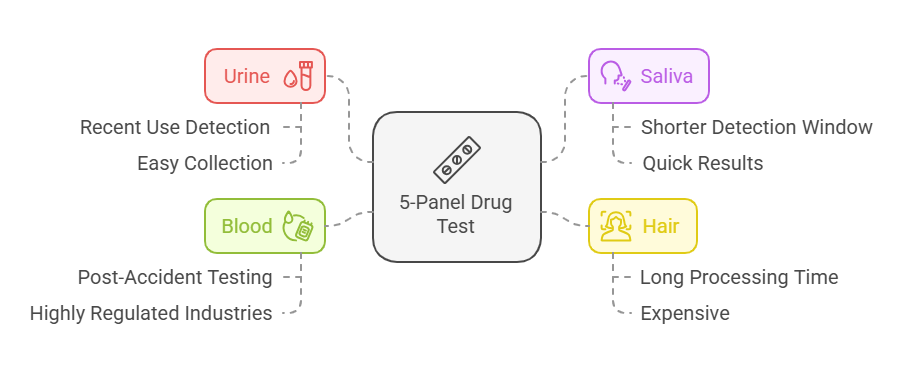
The 5-panel drug test works by detecting specific metabolites or byproducts that are created when the body processes drugs. These metabolites can remain in the body for varying amounts of time after drug use, which is known as the detection window. The type of sample taken from the individual—whether urine, hair, saliva, or blood—will significantly impact how far back a 5-panel drug test can detect the presence of drugs.
Sample Types Used in a 5-Panel Drug Test
A 5-panel drug test can be conducted using various types of biological samples. The most common sample types include:
- Urine: This is the most common and cost-effective method used in a 5-panel drug test. Urine samples can detect recent drug use, and they are relatively easy to collect and analyze.
- Saliva: Saliva tests are less invasive and quicker than urine tests. However, they typically have a shorter detection window, making them ideal for detecting recent drug use.
- Hair: Hair tests provide a longer detection window than urine and saliva, but they are more expensive and take longer to process.
- Blood: Blood testing is the most invasive method and typically used in situations where accuracy is crucial, such as post-accident testing or in highly regulated industries.
While the urine test is the most common method, the choice of sample type will influence how far back a 5-panel drug test can detect drug use, which we will explore in the next part of this article.
The Importance of the 5-Panel Drug Test
In the context of employee and pre-employment screenings, a 5-panel drug test is a valuable tool for maintaining a safe and productive work environment. It helps to identify individuals who may be under the influence of drugs while on the job, preventing workplace accidents and protecting both the individual and their colleagues.
Furthermore, companies that implement regular drug testing programs can demonstrate a commitment to the health and safety of their workforce. For industries where safety is paramount, such as transportation, healthcare, and construction, a 5-panel drug test is not just a best practice—it’s often a requirement by law or regulation.
Understanding the Detection Window of a 5-Panel Drug Test
A crucial aspect of a 5-panel drug test is understanding how far back it can detect substances within a person’s system. The detection window refers to the period during which a drug can be detected after use. This window varies depending on several factors, including the type of sample taken (urine, saliva, hair, or blood), the drug being tested, and individual characteristics such as metabolism, frequency of drug use, and the amount used.
In this section, we’ll discuss the detection windows for different substances tested by a 5-panel drug test and the factors that influence these windows. We’ll also highlight how Exact Background Checks offers reliable drug testing services for businesses, helping employers ensure compliance with legal and safety regulations.
Detection Window for Each Substance Tested in a 5-Panel Drug Test
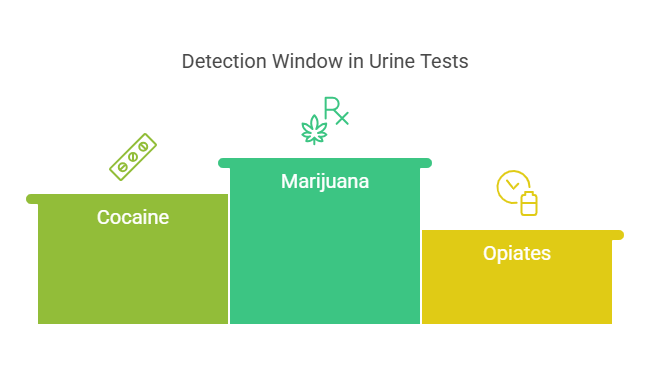
1. Marijuana (THC)
Marijuana, specifically its active compound THC, is one of the most commonly tested substances in a 5-panel drug test. The detection window for THC can vary widely, depending on the frequency of use and the type of test used.
Urine Test:
- Occasional users (one-time or infrequent use): THC may be detectable in urine for up to 3 days after use.
- Regular users (several times per week): THC may be detectable for up to 7-10 days.
- Chronic users (daily or heavy use): THC can stay in the urine for up to 30 days or more, especially in individuals with higher body fat percentages, where THC is stored in fat cells.
Hair Test:
Hair tests have the longest detection window for THC. THC metabolites can be detected in hair follicles for up to 90 days, regardless of whether the individual is a frequent or occasional user. Hair tests are ideal for detecting long-term patterns of drug use.
Saliva Test:
THC is typically detectable in saliva for 1-3 days after use. This makes saliva tests best suited for detecting recent drug use.
Blood Test:
THC is detectable in blood for a short period, typically 1-2 days, after use. Blood tests are often used when there is suspicion of recent impairment due to marijuana use.
2. Cocaine
Cocaine is another common substance tested for in a 5-panel drug test. Cocaine metabolites are usually detectable for a shorter period compared to marijuana, but they can still stay in the system for several days.
Urine Test:
- Occasional users: Cocaine metabolites can be detected for up to 2-4 days.
- Regular users: Cocaine may remain detectable in urine for up to 7-10 days.
- Chronic users: Those who use cocaine frequently may test positive for up to 14 days or more.
Hair Test:
Similar to marijuana, cocaine can be detected in hair for up to 90 days. This test is effective in identifying long-term drug use.
Saliva Test:
Cocaine is detectable in saliva for up to 1-2 days after use.
Blood Test:
Cocaine is detectable in blood for a very short period—typically 12-48 hours after use.
3. Opiates (Heroin, Morphine, Codeine)
Opiates are highly addictive substances, and their detection window can vary based on the specific drug used.
Urine Test:
- Heroin: Heroin is typically detectable for up to 2-4 days in urine.
- Morphine and Codeine: These opioids can be detected in urine for up to 2-3 days.
Hair Test:
Opiates like heroin, morphine, and codeine can be detected in hair for up to 90 days, similar to the detection of marijuana and cocaine.
Saliva Test:
Opiates are detectable in saliva for 1-4 days, depending on the specific drug and usage pattern.
Blood Test:
Opioids like heroin, morphine, and codeine can be detected in blood for up to 24 hours after use, although blood tests are generally not used for standard drug testing due to their invasiveness.
4. Amphetamines (Including Methamphetamine)
Amphetamines, including methamphetamine, are central nervous system stimulants that can stay in the body for several days.
Urine Test:
- Occasional users: Amphetamines can be detected for 1-3 days after use.
- Regular users: Methamphetamine can be detectable in urine for up to 7-10 days.
- Chronic users: Those who use amphetamines regularly may have detectable levels for up to 14 days.
Hair Test:
As with other substances, amphetamines can be detected in hair for up to 90 days.
Saliva Test:
Amphetamines are detectable in saliva for 1-2 days.
Blood Test:
Methamphetamine and other amphetamines are detectable in blood for 12-24 hours.
5. Phencyclidine (PCP)
PCP is a hallucinogenic drug that can stay in the body for a longer period than some other substances.
Urine Test:
PCP is detectable for up to 7-14 days, particularly in regular or heavy users.
Hair Test:
PCP can be detected in hair follicles for up to 90 days.
Saliva Test:
PCP is typically detectable in saliva for 1-3 days.
Blood Test:
PCP can be detectable in blood for 24-48 hours.
Factors That Affect the Detection Window

The detection window for each substance can be influenced by several factors that vary from person to person. These factors include:
1. Frequency of Drug Use
As discussed, occasional users may have drugs in their system for a shorter period compared to regular or heavy users. Chronic users will generally test positive for longer periods because their bodies accumulate a greater quantity of drug metabolites over time.
2. Metabolism
An individual’s metabolic rate plays a significant role in how quickly drugs are processed and eliminated from the body. People with faster metabolisms tend to clear drugs more quickly, whereas those with slower metabolisms may retain drug metabolites for longer periods.
3. Body Fat Percentage
Certain drugs, such as marijuana, are fat-soluble, meaning they are stored in fat cells. Individuals with higher body fat percentages may retain drug metabolites longer than those with lower body fat. This factor is particularly relevant when considering substances like THC.
4. Hydration and Diet
Hydration levels and diet can impact the speed at which the body processes drugs. Dehydration may lead to a concentration of metabolites in urine, potentially leading to a positive result for a longer time. Likewise, a healthy diet and regular exercise may help eliminate substances more efficiently from the body.
5. Type of Drug Test
The type of drug test used is a major determinant of how far back a 5-panel drug test can detect substances. Urine tests are typically more sensitive to recent drug use, while hair tests have the longest detection window. Saliva and blood tests are often used when immediate detection is necessary but have much shorter detection windows.
How Exact Background Checks Can Help
At Exact Background Checks, we offer reliable drug testing services for businesses looking to maintain a safe and drug-free workplace. We understand the intricacies of drug testing, including the factors that influence detection windows. Our drug testing services include urine, saliva, and hair tests, providing flexibility and accuracy in detecting substance use across varying timeframes.
With our expertise, businesses can implement comprehensive drug testing programs that help reduce risks, enhance workplace safety, and ensure compliance with legal regulations.
Legal Aspects of 5-Panel Drug Testing
1. Drug Testing Regulations and Compliance
Drug testing, including 5-panel drug testing, is subject to various regulations that vary by state, industry, and type of employment. Employers must be aware of the legal framework surrounding drug testing to avoid potential legal challenges, employee discrimination claims, or privacy violations.
In the United States, there is no federal law requiring drug testing in private-sector jobs, but certain industries are federally regulated and require drug testing. For instance, the Department of Transportation (DOT) mandates drug testing for transportation workers under FMCSA (Federal Motor Carrier Safety Administration) regulations, including drivers of commercial vehicles.
While federal regulations are important, it is the state laws that often govern whether drug testing is permissible, the conditions under which it can be done, and the drugs that can be tested for. Employers should ensure that their drug testing practices comply with the following:
- State-specific drug testing laws: Some states prohibit random drug testing or require employers to have a specific drug-free workplace policy.
- Consent and notification: Many states require that employees or applicants provide written consent before undergoing a drug test. Employers must also notify employees about their drug testing policies in advance.
- Privacy and confidentiality: Drug test results are considered private medical information. Employers are required to handle test results with strict confidentiality, and they may only share results with individuals who have a legitimate need to know, such as HR personnel or management.
2. ADA and Discrimination Considerations
Under the Americans with Disabilities Act (ADA), employers are prohibited from discriminating against employees based on disabilities. However, drug testing for illegal substances, such as marijuana, does not typically violate ADA regulations, as the ADA specifically allows drug testing as long as the tests are consistent with business needs and comply with legal standards. For example, employers cannot discriminate against an employee who is taking a legally prescribed medication (such as painkillers) unless the medication impairs job performance or safety.
However, employers must be cautious when it comes to medical marijuana use. While marijuana is legal in some states for medical purposes, it is still illegal at the federal level. This legal gray area means employers in some states may face challenges in determining whether to hire an individual who uses medical marijuana. Employers should consult legal counsel to ensure their policies reflect state laws and federal requirements.
Frequently Asked Questions (FAQs)
What substances does a 5-panel drug test typically detect?
A 5-panel drug test detects marijuana (THC), cocaine, opiates (heroin, morphine, codeine), amphetamines (including methamphetamine), and phencyclidine (PCP).
Why is the 5-panel drug test commonly used in employment settings?
It's used because it's a standard for employment screening, simple and cost-effective, detects commonly abused drugs, and is widely accepted and regulated.
How do detection windows vary for different substances and sample types (urine, hair, saliva, blood)?
Detection windows vary significantly. Urine tests typically detect recent use (days), hair tests detect long-term use (up to 90 days), saliva tests detect very recent use (hours to days), and blood tests detect immediate use (hours). Each substance has its own specific detection window within these sample types.
What factors can affect the detection window of a 5-panel drug test?
Factors include frequency of drug use, individual metabolism, body fat percentage, hydration and diet, and the specific type of drug test used.
What are the key legal aspects employers should consider when implementing 5-panel drug testing?
Employers must consider drug testing regulations and compliance (state-specific laws, consent, privacy), ADA and discrimination considerations (especially regarding medical marijuana and prescribed medications), and ensure their policies are legally sound.
What substances does a 5-panel drug test typically detect?
A 5-panel drug test detects marijuana (THC), cocaine, opiates (heroin, morphine, codeine), amphetamines (including methamphetamine), and phencyclidine (PCP).
Why is the 5-panel drug test commonly used in employment settings?
It's used because it's a standard for employment screening, simple and cost-effective, detects commonly abused drugs, and is widely accepted and regulated.
How do detection windows vary for different substances and sample types (urine, hair, saliva, blood)?
Detection windows vary significantly. Urine tests typically detect recent use (days), hair tests detect long-term use (up to 90 days), saliva tests detect very recent use (hours to days), and blood tests detect immediate use (hours). Each substance has its own specific detection window within these sample types.
What factors can affect the detection window of a 5-panel drug test?
Factors include frequency of drug use, individual metabolism, body fat percentage, hydration and diet, and the specific type of drug test used.
What are the key legal aspects employers should consider when implementing 5-panel drug testing?
Employers must consider drug testing regulations and compliance (state-specific laws, consent, privacy), ADA and discrimination considerations (especially regarding medical marijuana and prescribed medications), and ensure their policies are legally sound.
Conclusion: Key Takeaways on 5-Panel Drug Testing
The 5-panel drug test is a reliable and widely used method for detecting drug use, particularly in the workplace and during pre-employment screenings. By testing for marijuana, cocaine, opioids, amphetamines, and PCP, it helps employers ensure a safe and productive environment for their employees. Understanding the detection window for each drug, as well as the factors that influence these windows, is essential for both employers and individuals undergoing testing.
Key takeaways include:
- Drug Detection Windows: The detection windows vary by drug and test method, with urine tests detecting recent use and hair tests identifying longer-term use patterns.
- Legal Compliance: Employers must adhere to local, state, and federal drug testing laws and regulations, which may vary by industry and region. It’s important to have a clear drug testing policy and follow privacy and confidentiality guidelines.
- Impact of Drug Testing on Employment: Employers have the right to administer drug tests and enforce drug-free policies, but they must also be aware of discrimination laws, especially concerning medical marijuana use.
- Reliable Drug Testing Services: Partnering with a trusted background check service provider, like Exact Background Checks, ensures accurate, legal, and efficient drug testing that aligns with company policies and regulations.
Incorporating a comprehensive drug testing program in the workplace is crucial for maintaining safety, compliance, and productivity. Whether using a 5-panel test or another method, employers and employees should be informed of the process and implications of drug testing for long-term success.
